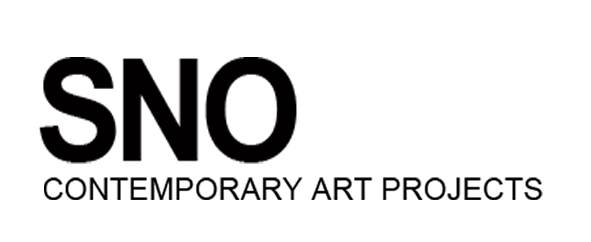Field Notes Symposium: IN-Formalism Exhibition
Field Notes Symposium: IN-Formalism Exhibition
Edited by Ruark Lewis
Published 2024
Field Notes is an investigation featuring art historians and theorists, artists and performers; it includes archival photographs and documents, paintings and sculptures, early graphic notations, performances and scores, poetry and experimental texts, along with stills from early 1970s video. This collection of essays makes a significant contribution to the history of abstract non-objective art in Australia. We begin mapping from the radical, contemporary exhibition called The Field, 1968 and then follow the next two generations of non-objective artists. The new generation tracks an expanding and increasingly hybrid interdisciplinary field of practice and their fluid contemporary forms, including the unfixed movement associated with recent digital technologies.
This publication anthologises different layers and ideas found in the exhibition IN-Formalism. IN-Formalism could be described as an ambitious effort to survey an intergenerational story of Australian non-objective art. Field Notes, the publication, emerged from a symposium developed by Sydney Non Objective Contemporary Art Projects at Casula Powerhouse Art Centre in 2019.
Paperback
240 x 270mm
152 pages
ISBN: 978-0-9946323-2-0
Designer: Harry Williamson Design
Chapter Summaries
CLOCKS AND CLOUDS by Kraig Grady and Terumi Narushima
The performers present totally acoustic performances featuring their specially retuned vibraphone and pump organ. These unique instruments – with a pure 151 limit harmonic tuning – explore the beauty of room resonances via ancient sacred scales and multi-dimensional geometries.
TRAFFIC WITH THE WEAK by Ann Stephen
This symposium paper follows the conceptual art of Ian Burn and Mel Ramsden, (who both exhibited in The Field, 1968, NGV) that grew out of their frustration with the discourse of painting in the mid-1960s. While Ramsden painted “under the spell of Ad Reinhardt”, Burn was working at the other end of the spectrum with light and reflection, though both were intrigued by the failure or limits of perception.
NOTHING COMES FROM NOTHING: COLLABORATIVE ART, RELATIONAL ART AND AUDIENCES by Nigel Lendon
Every work of art emerges out of some kind of collaborative process. Nobody looks at a work of art without some implicit or explicit understanding of the sociocultural relations of its production. The collaborative works with artists Emma Beer, Lucina Lane and Mel Ramsden serve as examples to illustrate this aspect of Lendon's final works.
JOURNAL by Geoffrey Barnard
The chapter examines the radiophonic realisation of the composition Journal (1969) by David Ahern, and the notational schemes employed, its production and its unique mode of dissemination by the Australian Broadcasting Commission. A comparison is drawn with John Cage's Roaratorio (1979). The status Ahern enjoyed internationally as a composer and performer is discussed in regard to his relationships with Karlheinz Stockhausen and Cornelius Cardew.
I ALWAYS WANTED TO MAKE ABSTRACT PAINTINGS: BENNETT POST-BASQUIAT by Ian McLean
Gordon Bennett's reputation as a leading postcolonial artist was well established, however, in the last decade of his life he turned towards a type of geometric abstraction. This chapter explores the continuities and discontinuities of his late style.
PHILIPPA CULLEN AND INTERACTIVE ART IN AUSTRALIA by Stephen Jones
A discussion of a series of videos of Philippa Cullen's ground-breaking use of the theremin in her dance performances of the early to mid-1970s.
LOST OPPORTUNITIES: WOMEN IN AND OUT OF THE FIELD by Angela Goddard
Wendy Paramor and Normana Wright were two of many women artists working through various modes of abstraction in Australia in the second half of the 1960s, and their inclusion in The Field, 1968, NGV. This section discusses their milieu — Virginia Coventry, Virginia Cuppaidge, Janet Dawson, Margaret Dredge, Leslie Dumbrell, Erica McGilchrist, Carol Rudyard, Miriam Stannage and Margaret Worth.
AUSTRALIAN CENTRE FOR CONCRETE ART by Julian Goddard
The international network, AC4CA/Australian Centre for Concrete Art, reviews the history of AC4CA in Perth, and the use of concrete art in civic spaces reflecting an emphasis on the material basis of art making, non-representation, purity/singularity and a focus on the process of construction.
LIGHT CONSTRUCTIONS: NOTES ON SITE-SPECIFIC PRACTICE by Biljana Jančić
The piece Light Construction was a site-specific installation commissioned specifically for the IN-Formalism exhibition. Biljana Jančić revisits a selection of her previous works to consider the (de-)constructive potential of light as a material.
FROM VOICE TO TEXT by Amanda Stewart
A description of her poems and vocal works, the performances of which were programmed to complement the visual work observer/observed exhibited in IN-Formalism, together with a synopsis of some of the processes and ideas which inform them.
APOLOGY by Shane Haseman and THE FIVE UNKNOWABLES by Wrong Solo (Agatha Gothe-Snape and Brian Fuata)
Haseman’s didactic performance, Apology, appears in print for the first time in Field Notes. Wrong Solo present a neo-formalist text-for-perfomance, relaying their piece to the performers using mobile phones.
GLITTERING SALVAGE by Ian Andrews and Garry Bradbury
Glittering Salvage was a collaborative performance by Ian Andrews and Garry Bradbury, using a variety of redundant technologies and home-constructed equipment to make music from vinyl records and other objects. This includes modified turntables and home-built cartridges and styluses to play a variety of objects that range from cut-ups to reassembled collage.
Exhibition Catalog Essay, IN-Formalism by James Paull and Ruark Lewis
Click to download PDF.


